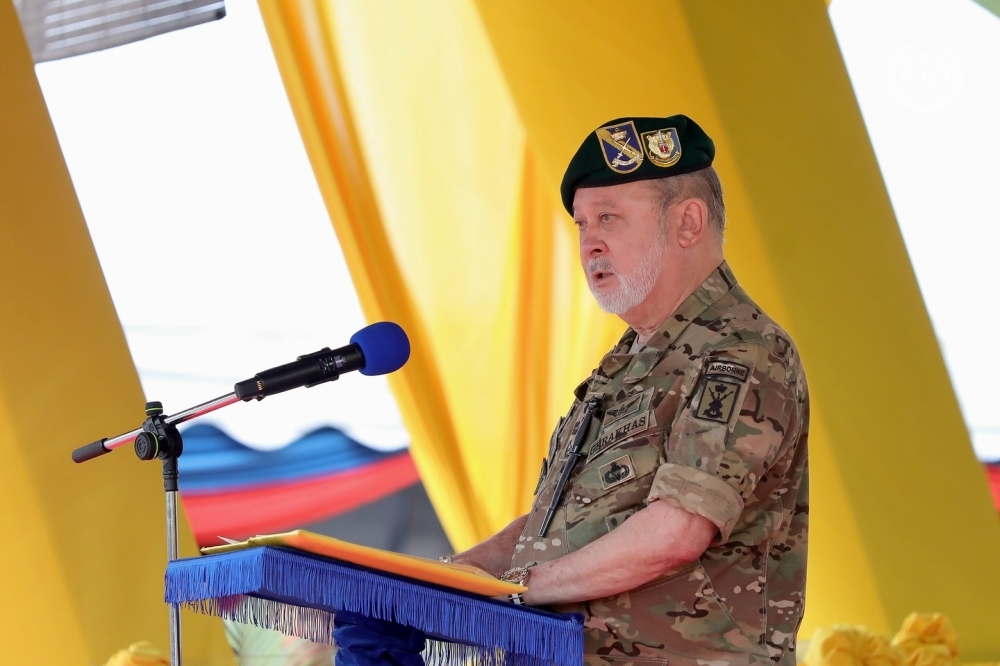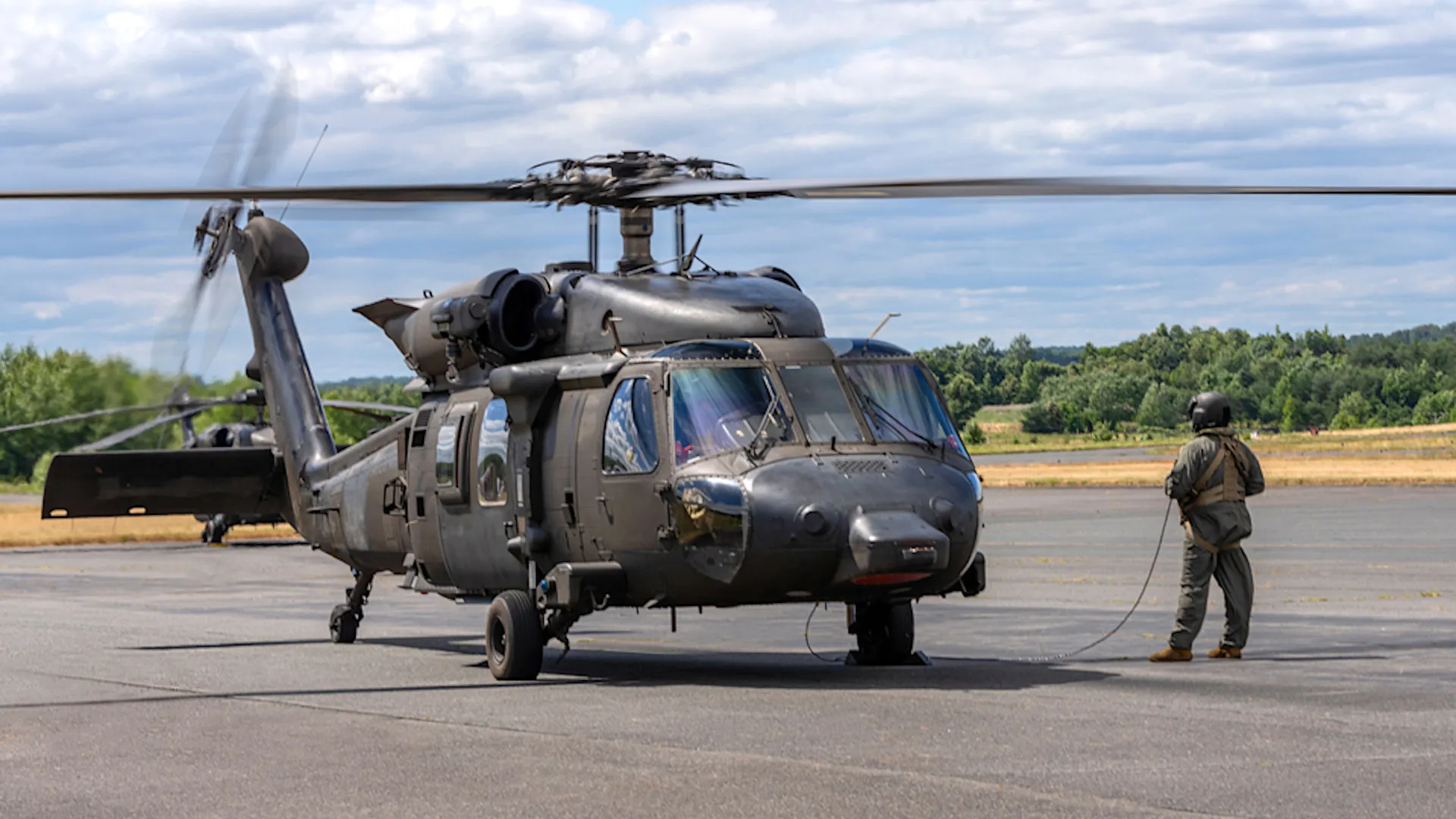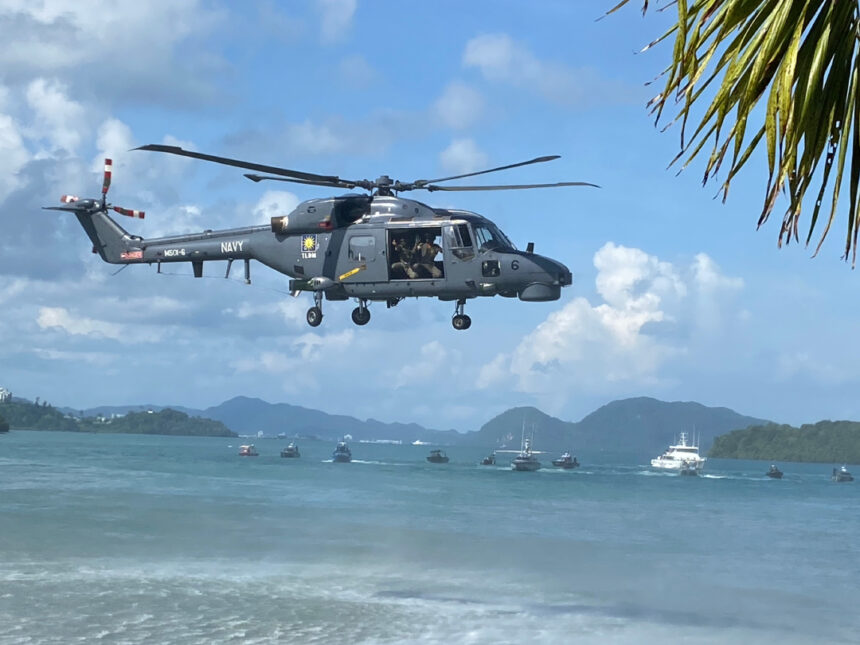KUALA LUMPUR – Sultan Ibrahim Sultan Iskandar, the Yang di-Pertuan Agong and head of the Malaysian Armed Forces, has stepped in to stop the Ministry of Defence (Mindef) from going ahead with plans to acquire four UH-60A Black Hawk helicopters.
The contract with Aerotree Defence and Services Sdn Bhd had already been signed, but during the 60th Anniversary Parade of the Special Service Regiment on 16 August, the King was clear in his objections.
He called the helicopters, which are more than 30 years old, “flying coffins” and expressed concern about repeating mistakes from past defence purchases. His outspoken comments have put a spotlight on the way Malaysia handles military spending and equipment safety.
The original agreement, signed for RM187 million (around US$44.4 million) at LIMA ’23 in May 2023, called for Mindef to lease four Sikorsky UH-60A Black Hawk helicopters for five years.
They were meant to support the Army Air Team Nucleus (Pasukan Udara Tentera Darat, or PUTD) with transport, training, medevac, and rescue missions. Aerotree, a local defence contractor, was responsible for supplying the aircraft, aiming to boost army mobility without committing to high costs in the long run.
Malaysian Army pilots were even prepared with simulator training in Turkey, hoping for a smooth transition. But trouble began almost at once, mainly due to ongoing delivery delays. Aerotree pointed to interruptions in supply chains, blaming in part the war in Ukraine.
Despite three extensions, by July 2024, Deputy Defence Minister Adly Zahari said Aerotree had still not met its commitments. Defence Minister Datuk Seri Mohamed Khaled Nordin issued a final deadline for 30 October 2024.
When this deadline passed with no aircraft in sight, Mindef cancelled the deal in November, stating the company had failed to deliver as agreed.

King’s Strong Warning Over Ageing Helicopters
During the Mersing parade, Sultan Ibrahim didn’t hide his worries about bringing in old helicopters for key army roles. He remembered when Malaysia bought 88 used A-4PTM SkyHawk jets in the 1980s—only 40 of them were refurbished and later retired due to accidents.
The King told the country, “Are we going to put our pilots in flying coffins? Think for yourselves.” His message was clear: relying on aged aircraft for important missions puts lives at risk.
He explained that Black Hawk UH-60A helicopters entered service in the late 1970s and, after so many years, might have worn parts, outdated electronics, and ongoing maintenance challenges. These factors can threaten the safety of air crews.
The King also criticized what he saw as middlemen and ex-military figures acting like salesmen and inflating costs within defence deals.
He recalled raising his concerns five years ago when commandos bought rigid raiding craft for RM5 million each, while better boats were available for less than RM2 million. A more recent push to buy larger boats for RM10 million only deepened his doubts about the process.

Mixed Safety Record of Black Hawk Helicopters
The Sikorsky UH-60 Black Hawk, introduced in 1979, is known for its adaptability—moving troops, carrying out rescues, and supporting combat units. Twin engines and external racks for missiles add to its capabilities, and armies around the world, especially in the US, rely on it.
But the Black Hawk variant covered in Malaysia’s deal, the UH-60A, is the oldest version, and its safety history is mixed, especially if not maintained carefully or pushed past its design limits.
Some high-profile crashes have exposed the risks: a 1993 crash in Somalia received global attention after being dramatized in the film ‘Black Hawk Down’, and in 2020, a UH-60A accident in Egypt killed seven peacekeepers, later linked to maintenance issues.
Helicopters more than 30 years old are especially demanding to keep safe and reliable, a key concern with the models Malaysia considered. Modern Black Hawks, like the UH-60M, come with improved electronics and safety systems, but these upgrades are not present in the UH-60A.
The King’s “flying coffins” remark matches these worries about flying old machines with dated technology and increased risks.
Aftermath: Spotlight on Defence Spending
The King’s firm stance has forced a closer look at Mindef’s procurement methods. Calls for stricter evaluations and better value for money have grown louder. Criticism also fell on Aerotree, which failed to deliver the helicopters but later won a separate contract for airbase calibration, raising eyebrows about how contracts are awarded.
Defence Minister Mohamed Khaled Nordin responded by promising to match equipment buys to military needs, with a priority on readiness and safety. Mindef is now weighing options from leasing new helicopters from overseas, buying through regional partners, or updating older aircraft to improve mobility.
The failed deal also has wider effects for Malaysia’s defence direction. The country wants to help local industries while keeping pace with modern threats and needs. Yet balancing cost, reliability, and performance remains a challenge. Mindef could now turn to other routes, including government-to-government deals, learning from the issues exposed by this affair.
Related News:
Leonardo Sued for $2.7 Billion Over 2018 Helicopter Crash














